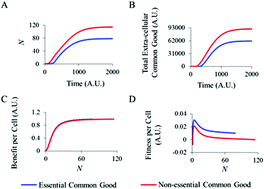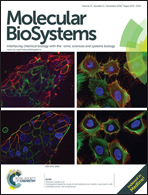Analysis of a strategy for cooperating cells to survive the presence of cheaters
Abstract
Cooperation benefits individual cells in a microbial population by helping accomplish tasks which are difficult or non-beneficial for individuals in the population to carry out by themselves. Hence, numerous examples exist of bacteria cooperating and working towards a common objective. The sharing of a common public good via quorum sensing is one of the ways of cooperation among individuals of many microbial populations. However, cheaters exploit cooperators in a population by not contributing to the production of the common goods but enjoy benefits from goods secreted by cooperating individuals. Thus, compared to cooperators, cheaters exhibit a fitness advantage. This suggests that in a population of cooperators invaded by cheaters, the cheaters should be naturally selected for. Instead, however, cooperation is ubiquitous and occurs in many species at various levels of biological organization. So, the question thus arises that what sort of strategies do these microorganisms employ to survive in the presence of cheaters? We try to answer this question here by mathematical analysis of a strategy used in microbial populations where public benefit received by cheaters is restrained to limit cheater invasion. Our results suggest that individuals exhibiting a little selfishness while still contributing to the population are best suited to resist cheater invasion.


 Please wait while we load your content...
Please wait while we load your content...